In early 2000s the open plan workplace was the first choice all large companies with hundreds of employees jumped to.
Latest research and statistics have shown that although it seemed to be a good idea at the time, open plan offices are now proved to be toxic for your employees and bad for business.
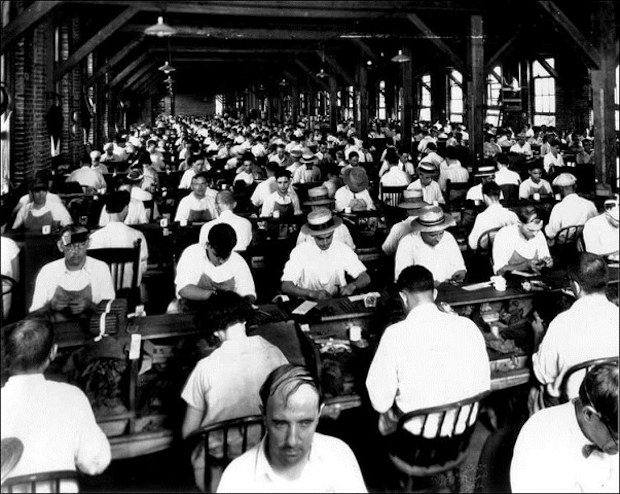
image source: k2space.co.uk
The open-plan offices are bad for your employees and your business
Here are the statistics supporting this conclusion:
- Open plan offices don’t boost interaction and collaboration between employees as imagined: there is 73% less time in face-to-face interactions while email and messaging use shoots up by over 67% (inc.com);
- Businesses register low productivity due to the ambient noise present in office environments, employees suffer greater instances of conflict, higher blood pressure and a larger number of sick days (europeanceo.com);
- Employees’ ability to focus and concentrate on their work is compromised, losing a total of 86 minutes every day to distractions (europeanceo.com) which leads to inefficiency and mistakes.
The open-plan offices generate increased business costs due to decreased productivity of disengaged and unhappy employees.
The open plan offices are the past. What’s the future of workplace?
Designers and workplace strategists have four new and better-suited work environments for businesses and large companies to help them move beyond the open plan offices.
Here they are via Work Design Magazine.com:
- Activity-Based Workplaces (ABW)
- Neighbourhood-based Choice Environments (NCE)
- Maker Environments, Mobile Occupants (MEMO)
- Immersive Environments
Activity-Based Workplace
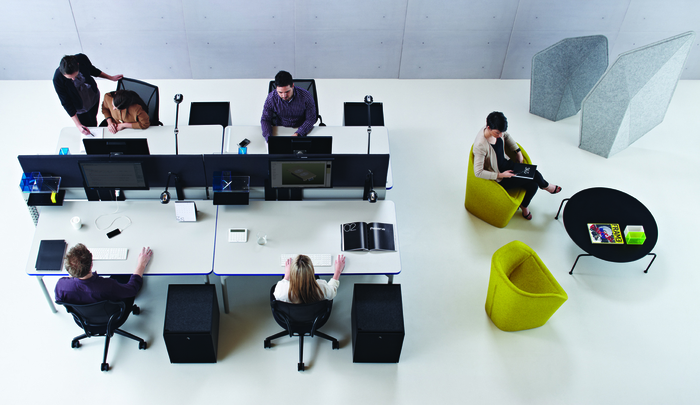
image source: officesnapshots.com
This office concept creates task-oriented solutions that encourage movement and empower people to select the right space for the job at hand.
ABW environments are typically designed to be an ecosystem of spaces, primarily grouped to serve four major work functions: solo work, collaboration, learning, socializing and rejuvenation.
Neighbourhood-Based Choice Environments
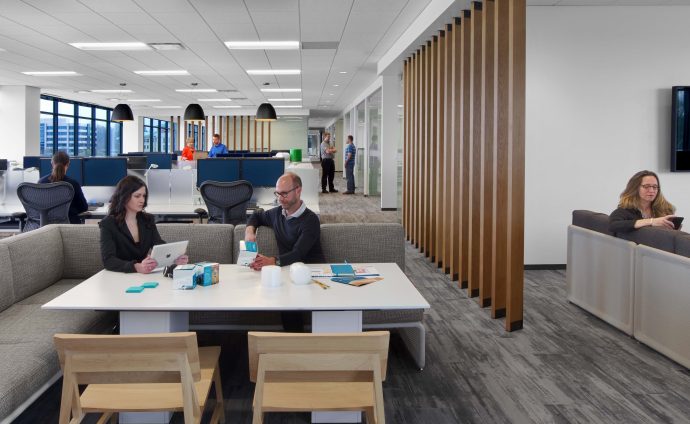
image source: workdesign.com
These spaces create a neighbourhood or home for teams to operate out of while still allowing people to have access to a variety of work settings. Having a team base where employees can connect and have a sense of belonging and identity is important to all.
NCE spaces create a sense of community and place that meets our territorial instincts. These environments enable people to connect by providing them with a variety of preferences while meeting the needs of the business and the individual.
Maker Environments, Mobile Occupants
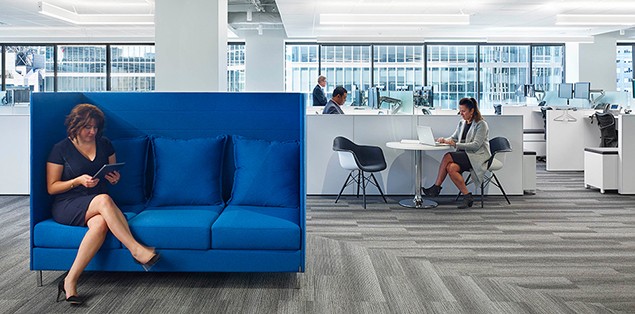
image source: hok.com
MEMO spaces are emerging for companies that are looking to create innovative spaces that foster creativity and speed to innovation. Simply put, it’s the “garage-ification” of space for programmers, creatives, or co-workers where space takes on a scrum or maker feel.
These spaces are emerging in sectors where rapid development is key. In Asia they are often referred to as “agile program space”.
Immersive Environments
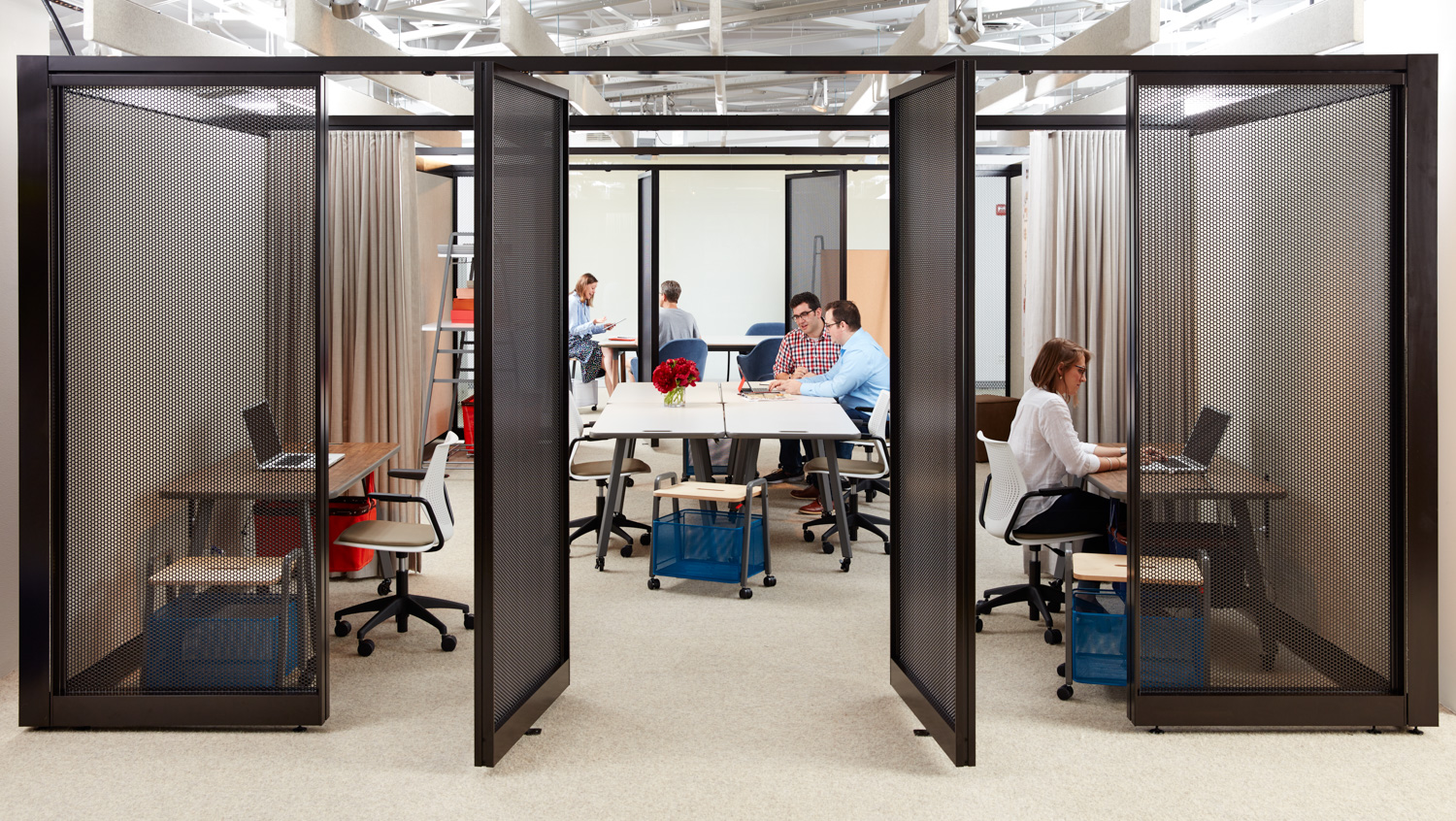
image source: workdesign.com
Immersive Environments pull the best lessons learned from work spaces—including open plan, co-working, ABW, NCE, and MEMO—and tailor them to meet the specific needs of a company.
They are less about what is trending and more focused on desired functions, outcomes, and creating compelling places.
Conclusion
Bob Fox, founder and CEO of FOX Architects has the following wise conclusion:
“The idea that ‘one size fits all’ when it comes to work environments is dead. The workplace design industry is filled with over simplified conversation about open vs. closed plan offices, and the truth is, it’s all irrelevant. It’s born out of a cost reduction mentality that permeates much of corporate America.
Cost is important, but it should not be the driver.
The workplace and all of its accoutrements have to support the leadership goals of the organization first.
Space is in many ways similar to fashion or technology – things go in and out of style all the time. What’s actually important to understand is that each organization is different and has a set of unique requirements needed to achieve maximum performance. And their space should appropriately reflect that.”


















